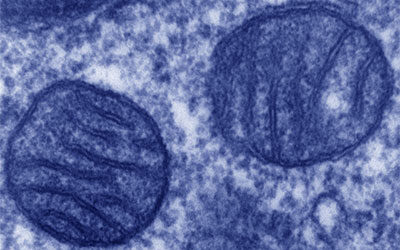A doctor once told me to eat only refined white grains/bread/pasta because they were easiest to digest. I know that whole grains have more nutrients though. Is there a way to prepare whole grains so they are easier to digest? Thanks.
Sally’s response:
Grains require careful preparation because they contain a number of antinutrients that can cause serious health problems. Phytic acid, for example, is an organic acid in which phosphorus is bound. It is mostly found in the bran or outer hull of seeds. Untreated phytic acid can combine with calcium, magnesium, copper, iron and especially zinc in the intestinal tract and block their absorption. This is why a diet high in improperly prepared whole grains may lead to serious mineral deficiencies and bone loss. The modern misguided practice of consuming large amounts of unprocessed bran often improves colon transit time at first but may lead to irritable bowel syndrome and, in the long term, many other adverse effects.
Other antinutrients in whole grains include enzyme inhibitors which can inhibit digestion and put stress on the pancreas; irritating tannins; complex sugars which the body cannot break down; and gluten and related hard-to-digest proteins which may cause allergies, digestive disorders and even mental illness.
Most of these antinutrients are part of the seed’s system of preservation—they prevent sprouting until the conditions are right. Plants need moisture, warmth, time and slight acidity in order to sprout. Proper preparation of grains is a kind and gentle process that imitates the process that occurs in nature. It involves soaking for a period in warm, acidulated water in the preparation of porridge, or long, slow sour dough fermentation in the making of bread. Such processes neutralize phytic acid and enzyme inhibitors. Vitamin content increases, particularly B vitamins. Tannins, complex sugars, gluten and other difficult-to-digest substances are partially broken down into simpler components that are more readily available for absorption.
Animals that nourish themselves on primarily on grain and other plant matter have as many as four stomachs. Their intestines are longer, as is the entire digestion transit time. Man, on the other hand, has but one stomach and a much shorter intestine compared to herbivorous animals. These features of his anatomy allow him to pass animal products before they putrefy in the gut but make him less well adapted to a diet high in grains—unless, of course, he prepares them properly. When grains are properly prepared through soaking, sprouting or sour leavening, the friendly bacteria of the microscopic world do some of our digesting for us in a container, just as these same lactobacilli do their work in the first and second stomachs of the herbivores.
So the well-meaning advice of many nutritionists, to consume whole grains as our ancestors did and not refined flours and polished rice, can be misleading and harmful in its consequences; for while our ancestors ate whole grains, they did not consume them as presented in our modern cookbooks in the form of quick-rise breads, granolas, bran preparations and other hastily prepared casseroles and concoctions. Our ancestors, and virtually all pre-industrialized peoples, soaked or fermented their grains before making them into porridge, breads, cakes and casseroles. A quick review of grain recipes from around the world will prove our point: In India, rice and lentils are fermented for at least two days before they are prepared as idli and dosas; in Africa the natives soak coarsely ground corn overnight before adding it to soups and stews and they ferment corn or millet for several days to produce a sour porridge called ogi; a similar dish made from oats was traditional among the Welsh; in some Oriental and Latin American countries rice receives a long fermentation before it is prepared; Ethiopians make their distinctive injera bread by fermenting a grain called teff for several days; Mexican corn cakes, called pozol, are fermented for several days and for as long as two weeks in banana leaves; before the introduction of commercial brewers yeast, Europeans made slow-rise breads from fermented starters; in America the pioneers were famous for their sourdough breads, pancakes and biscuits; and throughout Europe grains were soaked overnight, and for as long as several days, in water or soured milk before they were cooked and served as porridge or gruel. (Many of our senior citizens may remember that in earlier times the instructions on the oatmeal box called for an overnight soaking.)
Bread can be the staff of life, but modern technology has turned our bread—even our whole grain bread—into a poison. Grains are laced with pesticides during the growing season and in storage; they are milled at high temperatures so that their fatty acids turn rancid. Rancidity increases when milled flours are stored for long periods of time, particularly in open bins. The bran and germ are often removed and sold separately, when Mother Nature intended that they be eaten together with the carbohydrate portion; they’re baked as quick rise breads so that antinutrients remain; synthetic vitamins and an unabsorbable form of iron added to white flour can cause numerous imbalances; dough conditioners, stabilizers, preservatives and other additives add insult to injury.
Cruelty to grains in the making of breakfast cereals is intense. Slurries of grain are forced through tiny holes at high temperatures and pressures in giant extruders, a process that destroys nutrients and turns the proteins in grains into veritable poisons. Westerners pay a lot for expensive breakfast cereals that snap, crackle and pop, including the rising toll of poor health.
The final indignity to grains is that we treat them as loners, largely ignorant of other dietary factors needed for the nutrients they provide. Fat-soluble vitamins A and D found in animal fats like butter, lard and cream help us absorb calcium, phosphorus, iron, B vitamins and the many other vitamins that grains provide. Porridge eaten with cream will do us a thousand times more good than cold breakfast cereal consumed with skim milk; sourdough whole grain bread with butter or whole cheese is a combination that contributes to optimal health.
Be kind to your grains. . . and your grains will deliver their promise as the staff of life. Buy only organic whole grains and soak them overnight to make porridge or casseroles; or grind them into flour with a home grinder and make your own sour dough bread and baked goods. For those who lack the time for breadmaking, kindly-made whole grain breads are now available. Look for organic, stone ground, sprouted or sour dough whole grain breads and enjoy them with butter or cheese.
photo: Rwanda: Sunrise ©Betty LaDuke | Artist Betty LaDuke works with Heifer International to end world hunger by offering families in need long term solutions that work. One of the cornerstones of Heifer’s approach is “Passing on the Gift”, a cycle of sustainability where people share the offspring of their animals along with their knowledge, resources, and skills to create a circle of self-reliance that reaches around the globe.










0 Comments